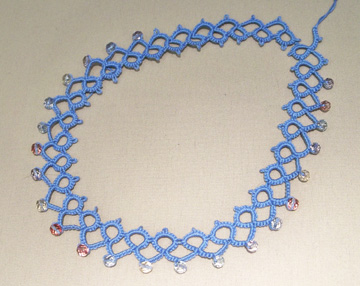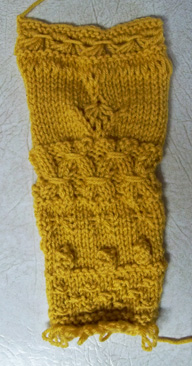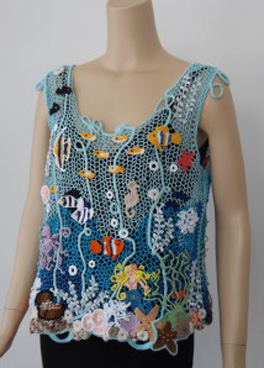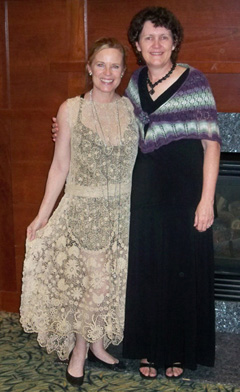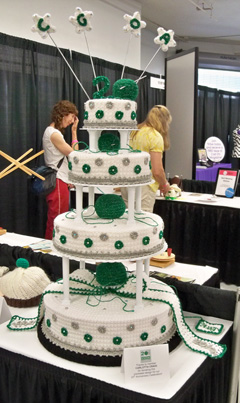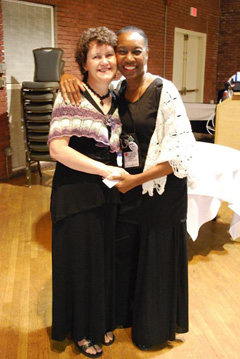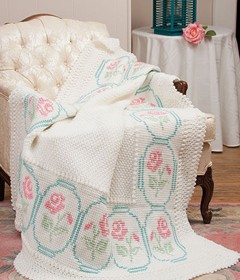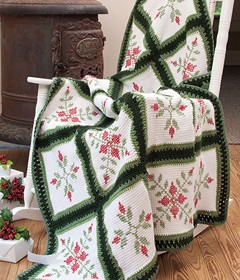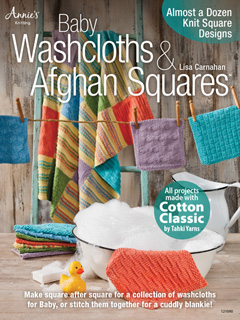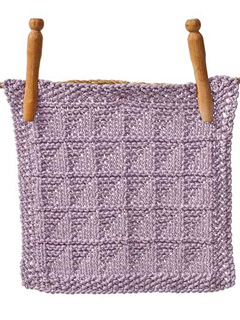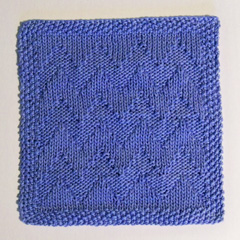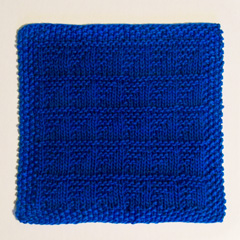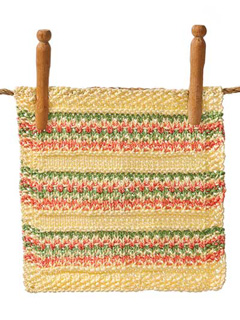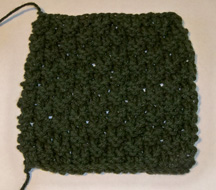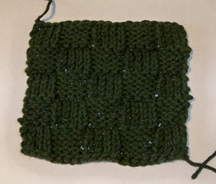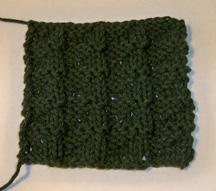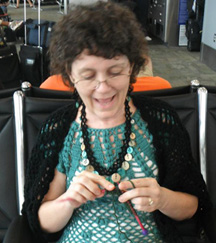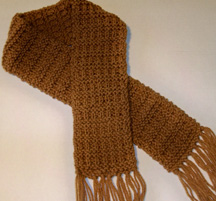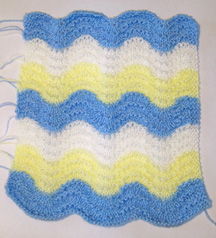This is the story of my first published knitting design. It’s the beginning of September when I’m writing this blog post. But I’m posting it now because the pattern has just been published in the Winter 2014/2015 issue of Vogue Knitting magazine. My design is #9 Mosaic Blanket on pages 48 and 49 in the magazine. Here it is for you to see:


Now here’s my story about this blanket…
Back on August 15th, 2014, I got a phone call and an e-mail from an editor at Vogue Knitting. She explained that they were doing a special interview with Barbara Walker, a “guru” in the knitting field, especially in mosaic knitting. Since I learned to knit in July, 2013, I’ve been devouring knitting books and continually learning new knitting techniques. I’ve always loved mosaic crochet, so mosaic knitting was one of the first techniques I learned, along with lace knitting, which I also love! I checked out one of Barbara Walker’s Mosaic Knitting books from my local library in the Fall of 2013 and quickly learned this fascinating knitting technique. So I said “yes” to taking on this mosaic blanket project and waited somewhat “impatiently” for the yarn to arrive. It took a whole week to get here, which was a lot longer than I had hoped it would!
I began this challenging blanket right away when the yarn arrived on August 25th. The yarn came in hanks, so I quickly wound a few hanks into cakes with my trusty umbrella swift and ball winder. Then I sat down and knit a gauge swatch so I could calculate how many stitches and rows would make the targeted 50” x 60” blanket.
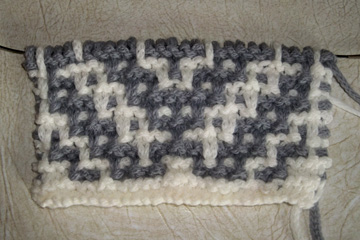
I calculated that I’d need to knit approx. 340 rows to make the blanket 60″ high. Since the deadline to get the finished blanket needed to be at the publisher’s office no later than Sept. 19th, that meant I should aim for finishing it by Sept. 12th, to allow time for shipping it from Arizona to New York. I wanted to aim for a few days earlier than that to finish it, so I decided I should knit between 20 and 24 rows per day. At first, my knitting speed was 6 rows per hour, but later on, it slowed down to 4-5 rows per hour (I’m not sure why, but it did!). I calculated it would take me approx. 17 days to knit this blanket at 20 rows per day, which was within the deadline of Sept. 12th. Each hank of yarn had 70 yards in it and was enough to knit 10 rows in the blanket. So that meant 2 hanks of yarn would yield 20 rows total, which was one day’s work. The yarn (Debbie Bliss Paloma) was a real pleasure to knit with, being 60% alpaca and 40% wool. It is a chainette yarn, which means that it’s like a knitted I-cord already. This yarn is as light as a feather and knits up to make a fabulous blanket that isn’t too heavy, but has lots of “bounce” to it. Here’s a few photos of the yarn:
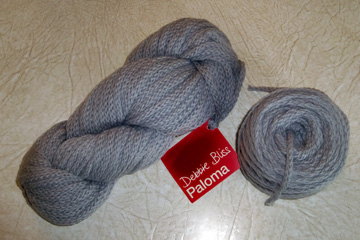
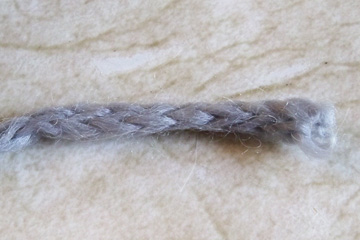
I learned some things while knitting this blanket. The first thing I learned is the necessity to use stitch markers between pattern repeats, especially in mosaic knitting with lots of pattern repeats across the rows. Without those markers, I would have messed up royally across the rows. The markers helped me see the different “sections” of the row and keep my stitches worked properly, which is essential in mosaic knitting. As you can see in this photo, I used scraps of yarn for makeshift markers, since my largest markers were not quite big enough to go on these large needles (I used size 15 circular needles for this blanket). The yarn markers worked great and didn’t cost a thing, either! So the next time you need some stitch markers, why not make your own out of contrasting scraps of yarn?
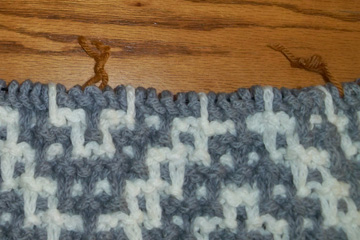
I also learned that once the blanket got big (like around halfway through when it was around 30” long), putting it on a clean table and knitting it there was easier than having the weight and thickness of the blanket on my lap (especially in the hot summer months!). I folded the blanket in half widthwise and sat on one side of the table to knit the first half of the rows. Then I simply moved to the other side of the table and folded the blanket in half lengthwise (so the top of the blanket was on the other side of the table, as well) to knit the second half of the rows.
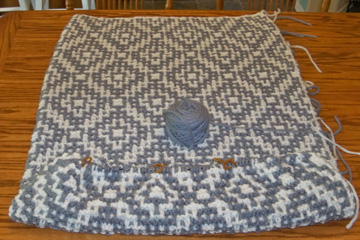
In mosaic knitting, you have to pay attention to what you’re doing all the time. It doesn’t help when your mind wanders and you knit more stitches than you need in that particular part of the row! How do I know this? Because I’ve done it myself, of course! And you have to pay attention to whether you’re working a right side or wrong side row because you slip your stitches with the yarn held in back on RS rows and with the yarn held in front on WS rows. While I was working on the blanket, I noticed a slipped stitch I had worked with the yarn held on the right side instead of on the wrong side while I was working the next row. So I fixed that mistake by simply moving the yarn to the wrong side on the next row before slipping that stitch again. If you don’t notice the mistake on the following row, though, it’s another matter!
Most mosaic patterns are written with charts, which I love, since I’m a visual person. I use a magnetic board with magnetic strips so I can place one of the strips ABOVE the row I’m currently working. This allows me to see what stitches are supposed to be BELOW the stitches I’m currently working. This also helps to find and fix any mistakes quickly before they’re too far back to fix!
Every now and then, I laid out the blanket to check for any mistakes so I could quickly fix them. In mosaic knitting, most mistakes are VERY OBVIOUS!!! While I was working the WS rows, I would check the RS to make sure I didn’t have the yarn held on the back (the RS) instead of on the front (the WS), like it should be.
Sometimes it’s hard to concentrate on a mosaic knitting project. It was much easier to work on this blanket with music playing than while watching a TV show because I could concentrate easier with the music.
Here are a few photos of a mistake I made and that section after fixing the mistake. I’ve added an arrow to where the mistake is located to help you see it better. Basically the gray horizontal line should have been a white vertical line! So I had to ladder down and fix that mistake before continuing. If I had looked at the blanket sooner, I wouldn’t have had to ladder down as many rows (approx. 18-20 rows)! It’s sure better to be able to fix a mistake by laddering down rather than having to rip out several hours of work, especially when you’re on a deadline to get it finished!
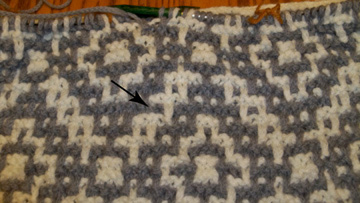

Okay, so can you answer a question for me? Am I a “glutton for punishment” for knitting a project this big or am I simply a knitter in search of a “challenge”? What do you think?
I hope you’ll give mosaic knitting a try. If you’ve never done mosaic knitting before, it might be best not to attempt a project this big for your first mosaic knitting project. Make something smaller, like a mosaic coaster or dishcloth first, to help you learn this technique. Then you’ll be ready to attempt something larger! And if you’d like to see a preview of all the fabulous projects in the Winter 2014/2015 issue of Vogue Knitting, check out this link.
Happy knitting (and crocheting),
Susan



